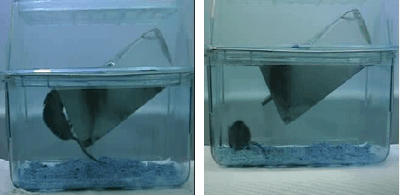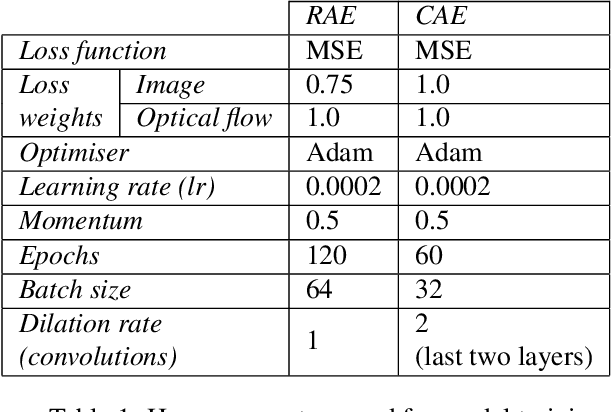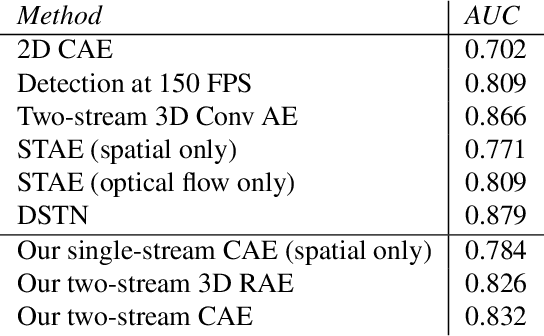James M Brown
Unsupervised detection of mouse behavioural anomalies using two-stream convolutional autoencoders
May 28, 2021



Abstract:This paper explores the application of unsupervised learning to detecting anomalies in mouse video data. The two models presented in this paper are a dual-stream, 3D convolutional autoencoder (with residual connections) and a dual-stream, 2D convolutional autoencoder. The publicly available dataset used here contains twelve videos of single home-caged mice alongside frame-level annotations. Under the pretext that the autoencoder only sees normal events, the video data was handcrafted to treat each behaviour as a pseudo-anomaly thereby eliminating them from the others during training. The results are presented for one conspicuous behaviour (hang) and one inconspicuous behaviour (groom). The performance of these models is compared to a single stream autoencoder and a supervised learning model, which are both based on the custom CAE. Both models are also tested on the CUHK Avenue dataset were found to perform as well as some state-of-the-art architectures.
Institutionally Distributed Deep Learning Networks
Sep 10, 2017



Abstract:Deep learning has become a promising approach for automated medical diagnoses. When medical data samples are limited, collaboration among multiple institutions is necessary to achieve high algorithm performance. However, sharing patient data often has limitations due to technical, legal, or ethical concerns. In such cases, sharing a deep learning model is a more attractive alternative. The best method of performing such a task is unclear, however. In this study, we simulate the dissemination of learning deep learning network models across four institutions using various heuristics and compare the results with a deep learning model trained on centrally hosted patient data. The heuristics investigated include ensembling single institution models, single weight transfer, and cyclical weight transfer. We evaluated these approaches for image classification in three independent image collections (retinal fundus photos, mammography, and ImageNet). We find that cyclical weight transfer resulted in a performance (testing accuracy = 77.3%) that was closest to that of centrally hosted patient data (testing accuracy = 78.7%). We also found that there is an improvement in the performance of cyclical weight transfer heuristic with high frequency of weight transfer.
 Add to Chrome
Add to Chrome Add to Firefox
Add to Firefox Add to Edge
Add to Edge